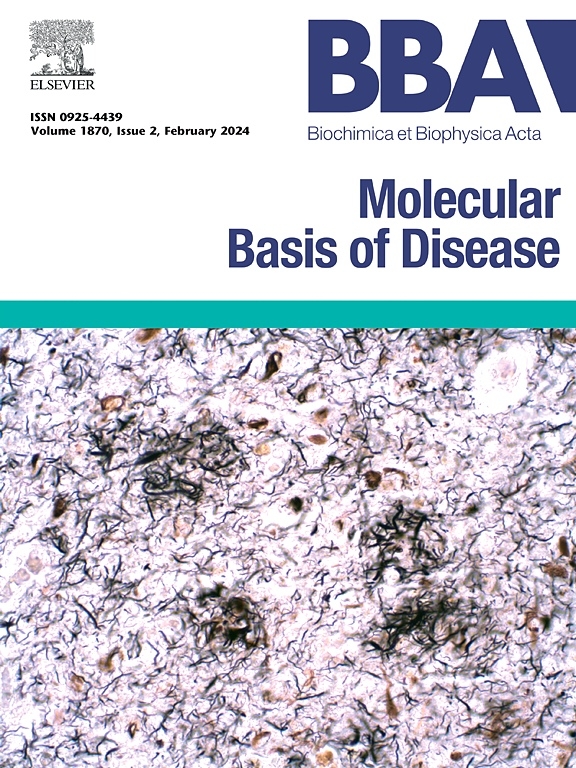BRCC3 aggravates pulpitis by activating the NF-κB signaling pathway in dental pulp cells
IF 4.2
2区 生物学
Q2 BIOCHEMISTRY & MOLECULAR BIOLOGY
Biochimica et biophysica acta. Molecular basis of disease
Pub Date : 2025-01-27
DOI:10.1016/j.bbadis.2025.167698
引用次数: 0
Abstract
BRCA1/BRCA2-containing complex subunit 3 (BRCC3) has been proved to exert pro-inflammatory effect in various inflammatory diseases through different mechanisms, but its involvement in pulpitis remains unclear. This study aims to investigate the regulatory role and mechanisms of BRCC3 in modulating dental pulp cell inflammation and pulpitis progression. The expression of BRCC3 was observed to be elevated in human/mouse pulpitis samples and lipopolysaccharide-stimulated human dental pulp cells (hDPCs). Manipulation of BRCC3 expression revealed that BRCC3 facilitated the expression of pro-inflammatory cytokines and apoptosis of hDPCs. RNA-sequencing and gene set enrichment analysis were utilized to explore the downstream signaling pathways related to BRCC3 functions. Dual luciferase reporter assay, western blot, and immunofluorescence staining were conducted for further validation. The results demonstrated that BRCC3 expedited IκBα phosphorylation and degradation, as well as p65 phosphorylation and nuclear translocation in hDPCs, ultimately activating the nuclear factor kappa B (NF-κB) signaling pathway. Moreover, conditional knockout of Brcc3 in mouse dental pulp cells effectively impeded the expression of IL-6, recruitment of immune cells, and necrosis of inflamed pulp tissue after 1 day and 1 week of pulp exposure. The level of p-p65 in Brcc3 conditional knockout mice was lower than the control mice, indicating the inhibition of NF-κB. Taken together, BRCC3 promotes pulpitis by activating the NF-κB signaling pathway in dental pulp cells.

求助全文
约1分钟内获得全文
求助全文
来源期刊
CiteScore
12.30
自引率
0.00%
发文量
218
审稿时长
32 days
期刊介绍:
BBA Molecular Basis of Disease addresses the biochemistry and molecular genetics of disease processes and models of human disease. This journal covers aspects of aging, cancer, metabolic-, neurological-, and immunological-based disease. Manuscripts focused on using animal models to elucidate biochemical and mechanistic insight in each of these conditions, are particularly encouraged. Manuscripts should emphasize the underlying mechanisms of disease pathways and provide novel contributions to the understanding and/or treatment of these disorders. Highly descriptive and method development submissions may be declined without full review. The submission of uninvited reviews to BBA - Molecular Basis of Disease is strongly discouraged, and any such uninvited review should be accompanied by a coverletter outlining the compelling reasons why the review should be considered.

 求助内容:
求助内容: 应助结果提醒方式:
应助结果提醒方式:


